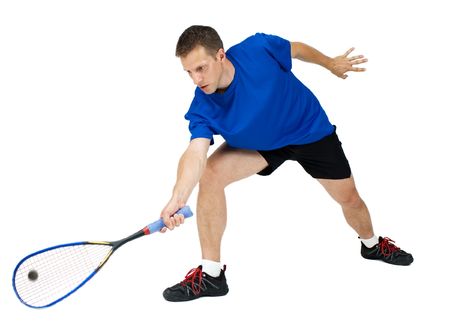Note that your final mark will not be saved in the system.
B1 Skills and strategies in isolated practices and competitive situations GapFill
You must fill all the gaps before clicking ‘Check Answers!’

There is a diverse range of skills and strategies that can be used to gain an advantage over an opponent or other competitors in various different sports. This activity will take a look at the different skills and strategies across a number of sports and how they can be used in isolated practice and in competitive situations.
Skills
Skill can be defined as a learned ability to perform a movement with success and efficiency. Many sports require the same skills, but with different ways of performing them. Common skills include:
- Passing - this involves transferring a ball between teammates. There are many different types of passes that can be played within a sport. For example, in rugby there is the pass which is played short, the pass which is played with pace to a more distant teammate, and an offload which is performed as a player is falling in a tackle.
- Scoring - this is ultimately the way in which games are won. The winners of all team sports are determined on the number of points or a team scores. For example, in basketball points are scored for shooting the ball through the . The number of points scored is based on the type of shot played. 2 or 3 points are scored for field goals, depending on whether the shot was played in or behind the arched three-point line, and 1 point is scored for throws.
- Travelling - this is a skill used in invasion games where a team travels into an opposition's territory in order to gain field position. The method of travelling differs between sports. For example, basketball players must dribble the ball by it while travelling, otherwise possession will be turned over to the opposition team. In football, players must only dribble with the ball at their feet, while in rugby, players tend to travel with the ball in their hands, but can also use their feet if needed. In sports like , travelling with the ball is not allowed, so players must let their passing and off-ball movement do the work.
- Intercepting and tackling - these skills involve dispossessing an opponent. An interception is made when an opposition's pass is cut out and the other team gains . A tackle is made when a player directly dispossesses another who has possession of the ball.
Other skills include tumbling in , bowling in cricket, and serving in sports like tennis and volleyball.
These can each be attempted in practice where one skill is focused on at a time, or in a situation, which is representative of what a performer will encounter in an actual game. For example, dribbling in basketball can be practised by itself, where a player works their way in and out a series of cones, or it can be practised under pressure, where a player must dribble past an active defender.
Strategies
A strategy is the overarching plan of how a team or an individual is going to use different to achieve the end goal. These are individual steps or actions that feed into the main strategy. For example, in team sports they may include:
- - For example, a football team may go with a 3-5-2 to overload attacking players against a weaker side, or they may wish to overload defenders against a stronger side and play a 5-4-1.
- Style of play - For example, a hockey team may wish to adopt an aggressive risk-taking approach against a weaker defensive team, or they may wish to play defensive against a stronger team and try to catch them on the attack. Another approach may be a possession style of play to tire out the opposition.
Examples of strategies in individual sports will be sport-specific. For example, in long-distance running events such as the 5 km, some participants may opt for a strategy of starting off quickly and setting the pace and then trying to hold the lead, whereas others may reserve their energy for the final lap where they kick into a finish.
Execution of strategies requires good decision-making in order to know how to assess a situation and select an appropriate response to counteract it.